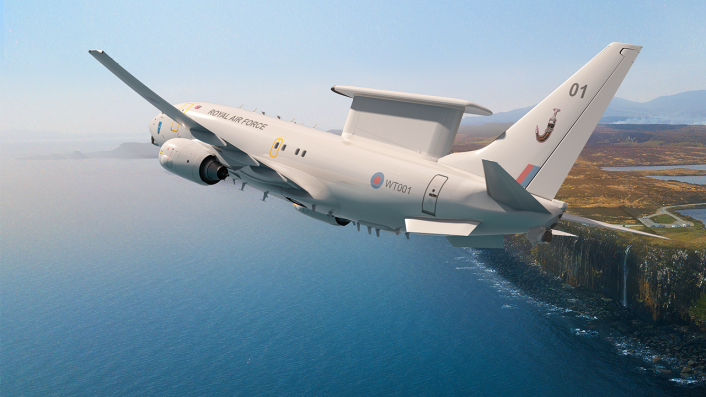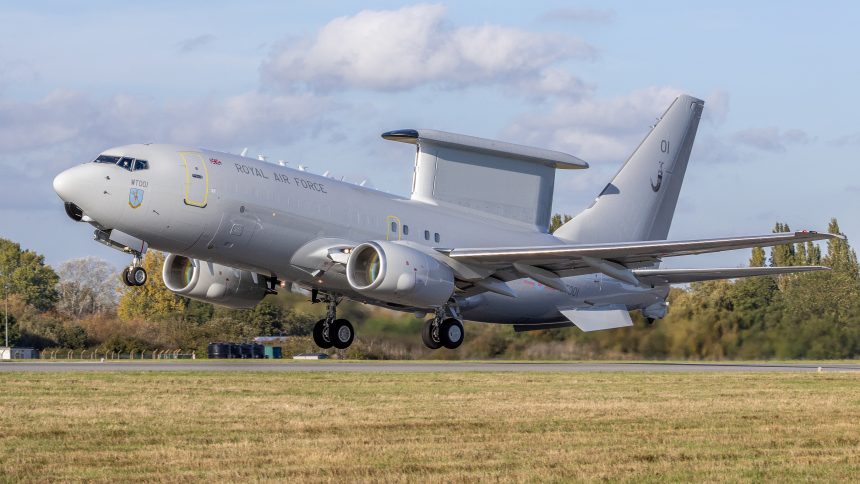The Royal Air Force’s first E-7A Wedgetail, designated Wedgetail AEW1, has now been painted in full military colors, although the fin flash appears to have been applied backward.
Less than a month following its first post-conversion test flight, Wedgetail AEW1 WT001 emerged from Air Livery’s hangar at London Southend Airport on Oct. 17, 2024, after being adorned with its Royal Air Force paint scheme.
The next day, on Oct. 18, the aircraft departed Southend just after 14.00 UTC on a short test flight before arriving back at Birmingham International Airport two hours later for further modification works at STS Aviation Services. During this test flight the aircraft, using callsign “BOEING 24”, ascended to an operational altitude over the UK’s south west region before descending for an approach at Exeter Airport and then proceeding at medium altitude to Birmingham.
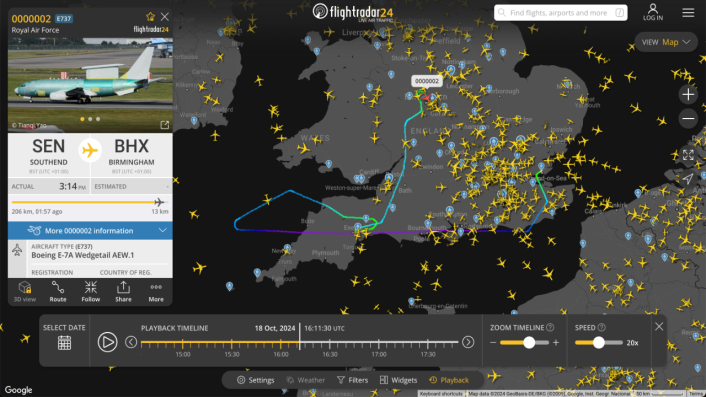
WT001 is the Royal Air Force’s first of three Wedgetail AEW1s, which will fill an airborne early warning capability gap that has existed since the retirement of the E-3D Sentry AEW1 in 2021. The squadron chosen to operate the fleet is 8 Squadron, who also operated the Sentry. A sheathed dagger, as featured on 8 Squadron’s crest, features prominently on the new aircraft’s tail fin in an increasingly uncommon display of squadron markings on an RAF aircraft. The dagger, of an Arabian design known as a Jambiya, was adopted as part of 8 Squadron’s heraldry in 1943 to represent their service across the Middle East flying from bases near Cairo, then Aden.
On the nose of the Wedgetail is an emblem representing the NATO Airborne Early Warning & Control Force. The RAF’s Wedgetail fleet will be a declared NATO asset when in service, working in tandem with NATO’s own E-3 Sentry fleet as well as their future fleet of E-7 Wedgetails once they arrive in the 2030s.
Wing Commander Sarah McDonnell is the Commanding Officer of 8 Squadron. Remarking upon the occasion, she said “Seeing the first UK Wedgetail, painted, with a visual representation of No.8 Squadron’s history is an exciting moment in the journey towards operational capability for the squadron, for RAF Lossiemouth and the RAF.”
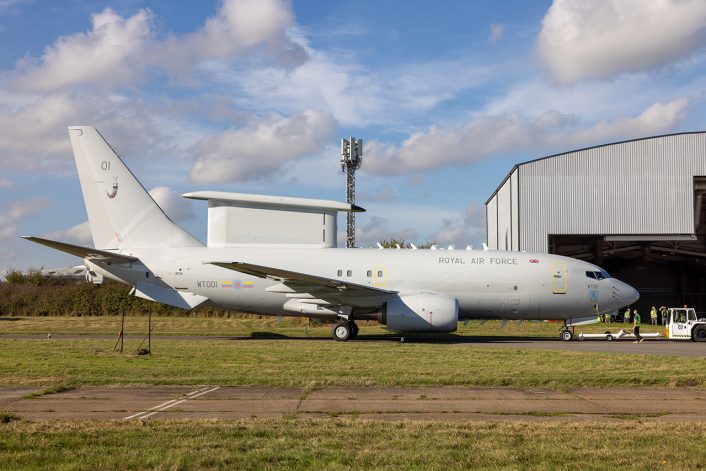
When in service, RAF Wedgetails will all be based at RAF Lossiemouth alongside the force’s P-8 Poseidon MRA1 fleet. The co-location of these aircraft, moving the AEW force away from RAF Waddington where the Sentry was based, will take advantage of their shared Boeing 737 platform to simplify logistics, crew training and maintenance.
With the Wedgetail also operated internationally by Australia, South Korea, Turkey, and, in the future, the United States and NATO, there will be a solid foundation of interoperability for this aircraft, with each nations’ crews able to provide their own experiences and learn from those of others during joint training exercises. The pipeline for future development to keep the aircraft competitive in an ever changing battlespace is also strong. The Royal Australian Air Force announced earlier this year a program to upgrade some of their E-7 fleet’s avionics equipment to keep them up to date with the latest capabilities. With the technological prowess and budget of the United States now fully behind the project too, these upgrades can only become more frequent and more potent.
The Royal Air Force initially planned to procure five Wedgetail airframes, though this was cut to the existing order of three. Despite the cut in airframes, the force still procured five radar sets. Officially this is to allow for a reduction in the required procurement of spares, but it does also raise hopes that a restoration to five airframes might become an available option in the future.
A defence review conducted by the UK’s new government is due in 2025, and will no doubt shed further light on the likelihood of where future defence investments might be made. Given developments made even in the last several years, the UK MoD might argue instead of procuring more Wedgetails to use available funds for unmanned AEW platforms. These could then operate in tandem with manned platforms in a manner similar to the RAAF’s operational concept for its P-8A Poseidons and MQ-4C Tritons.
A mistake?
Many aviation enthusiasts online have been quick to draw attention to the Wedgetail’s RAF fin flash, an identifying mark located on the tail fin.
Royal Air Force aircraft carry a fin flash of either red and blue or red, white and blue, in that order. On WT001, however, the flash has apparently been applied backwards, with the blue segment leading the red.
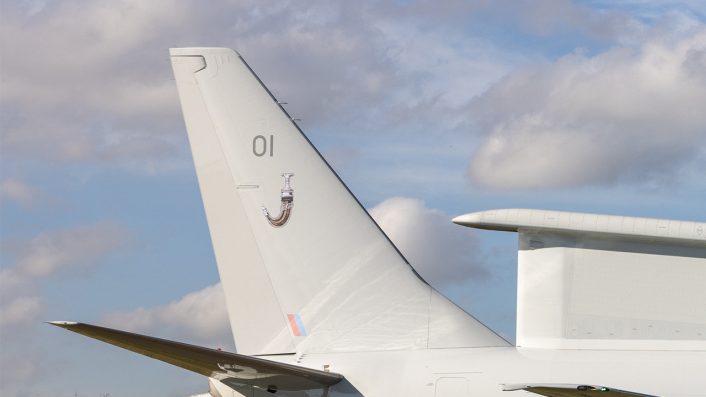
No official comment has been made regarding this error, though it will be interesting to see whether it is rectified before the next time the aircraft appears from a hangar. Hopefully, as a small part of the scheme, changing to the proper design should be able to be accomplished without a further expensive flight to a full scale painting facility.
